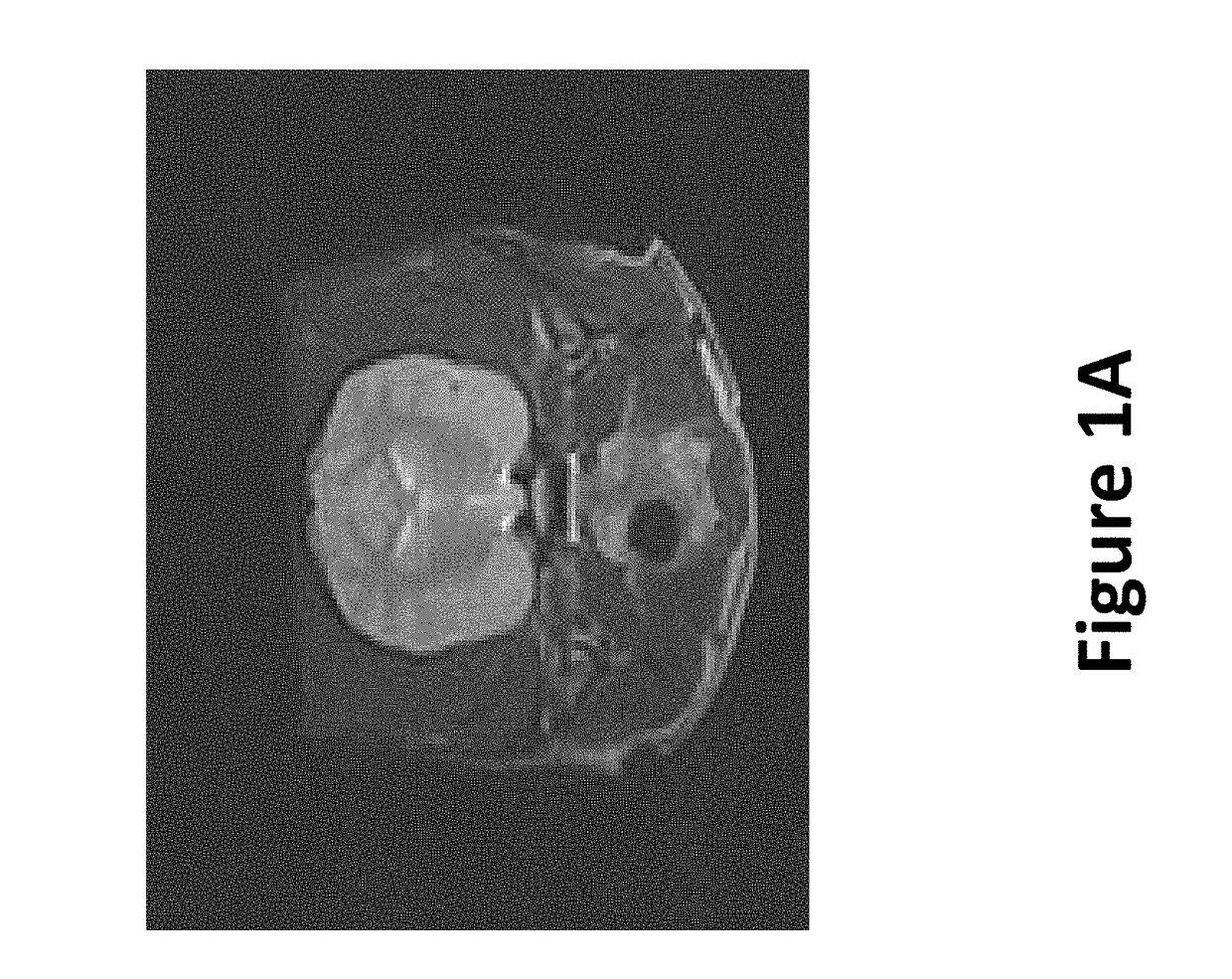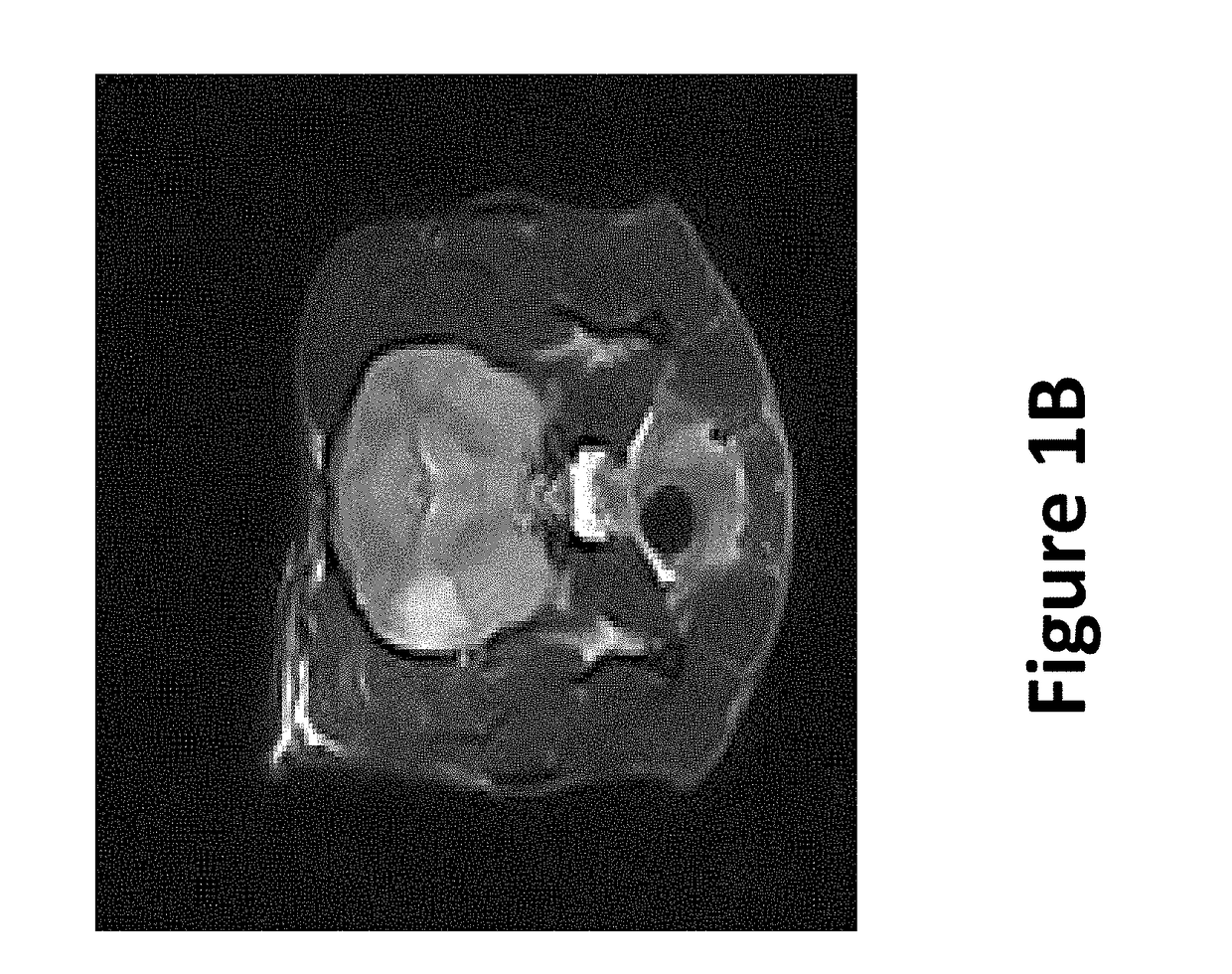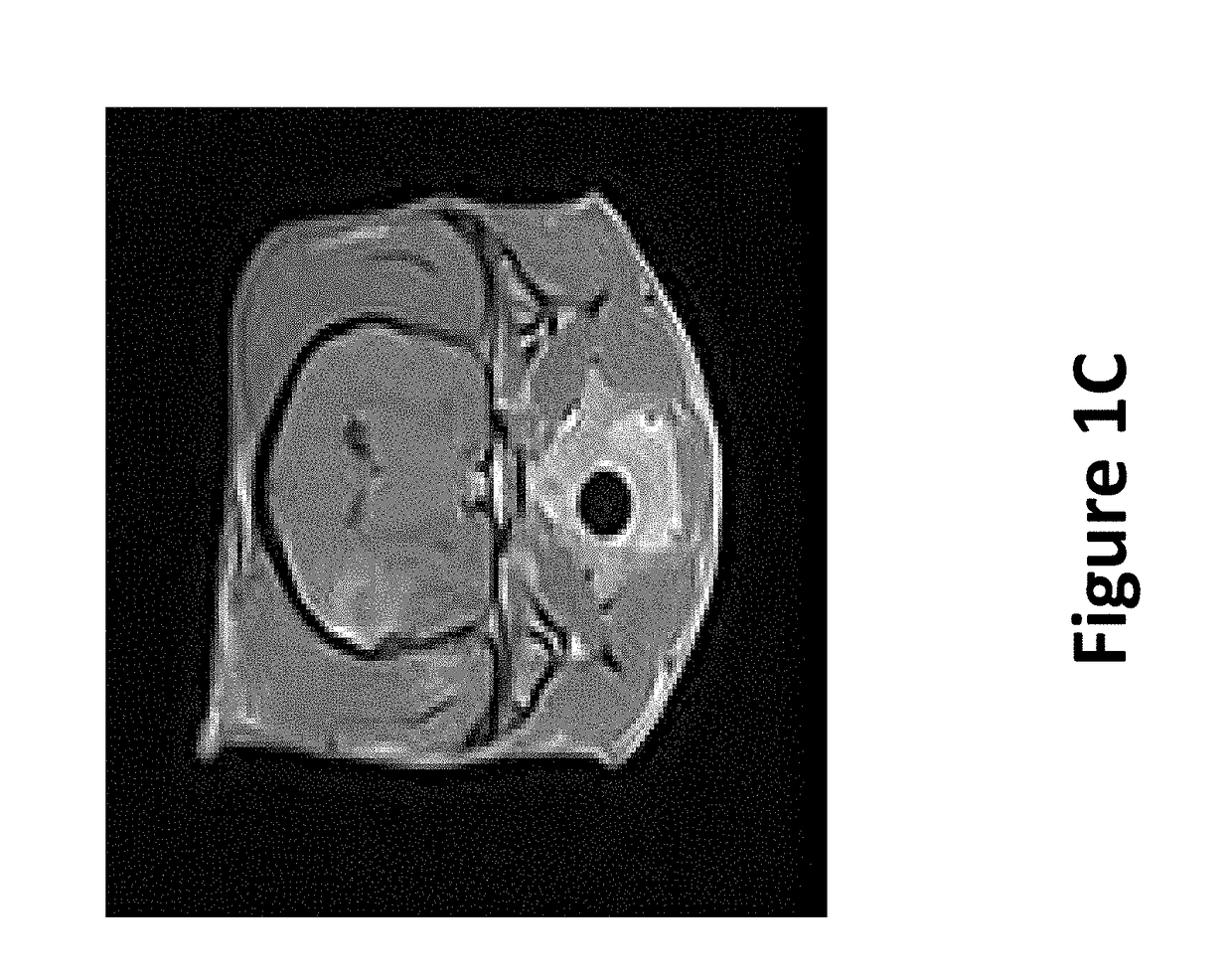Irreversible electroporation to create tissue scaffolds
a tissue scaffold and electroporation technology, applied in the field of biomedical engineering, can solve the problems that the use of ire in generating tissue scaffolds for tissue engineering has not been recognized
- Summary
- Abstract
- Description
- Claims
- Application Information
AI Technical Summary
Benefits of technology
Problems solved by technology
Method used
Image
Examples
example 1
eshly Excised Mouse Tissue to Create a Scaffold: IRE Scaffold Test Protocol
[0080]A single mouse was sacrificed via CO2 asphyxiation and the liver was surgically removed. Two round sections (1 experimental, 1 control) were removed from the liver using a 5 mm core borer. A straight edge was then cut into each section to facilitate orientation and imaging. The first section was subjected to eighty 100 μs 2500V / cm pulses at 4 Hz. The second section was not treated and left as control. Each section was then divided into 5 samples using a scalpel. The outer samples were discarded, leaving three samples from the experimental section and three samples from the control section.
[0081]One sample from the experimental section and one sample from the control section were subjected to sonication for 2 hours at 37° C. One sample from the experimental section and one sample from the control section were subjected to agitation via stir bar for 2 hours at 37° C. with a rotational rate of 60-300 rpm. ...
example 2
rmance Indicia
[0084]To illustrate 1) the possibility to monitor creation of the scaffold in real-time using imaging techniques, 2) the variety of tissues that can be used, and 3) how to preserve vasculature, a healthy female purpose bred beagle was used. Nine sets of ten pulses were delivered with alternating polarity between the sets to prevent charge build-up on the electrode surfaces. The maximum voltage-to-distance ratio used was 2000 V / cm because the resulting current did not exceed 2 amps. The charge that was delivered to the brain during the IRE procedure was 22.5 mC, assuming ninety pulses (50 μs pulse durations) that would result from a maximum hypothetical current of 5 amps.
TABLE 1IRE pulse parametersEXPOSUREGAPVOLTAGE TOPULSEELECTRODELENGTHDISTANCEVOLTAGEDISTANCEDURATIONTYPE[mm][mm][V]RATIO [V / cm]PULSES[μs]1 mm5550010009050BipolarStandard7160020009050
[0085]Method: After induction of general anesthesia, a routine parietotemporal craniectomy defect was created to expose the...
PUM
 Login to View More
Login to View More Abstract
Description
Claims
Application Information
 Login to View More
Login to View More - R&D
- Intellectual Property
- Life Sciences
- Materials
- Tech Scout
- Unparalleled Data Quality
- Higher Quality Content
- 60% Fewer Hallucinations
Browse by: Latest US Patents, China's latest patents, Technical Efficacy Thesaurus, Application Domain, Technology Topic, Popular Technical Reports.
© 2025 PatSnap. All rights reserved.Legal|Privacy policy|Modern Slavery Act Transparency Statement|Sitemap|About US| Contact US: help@patsnap.com



